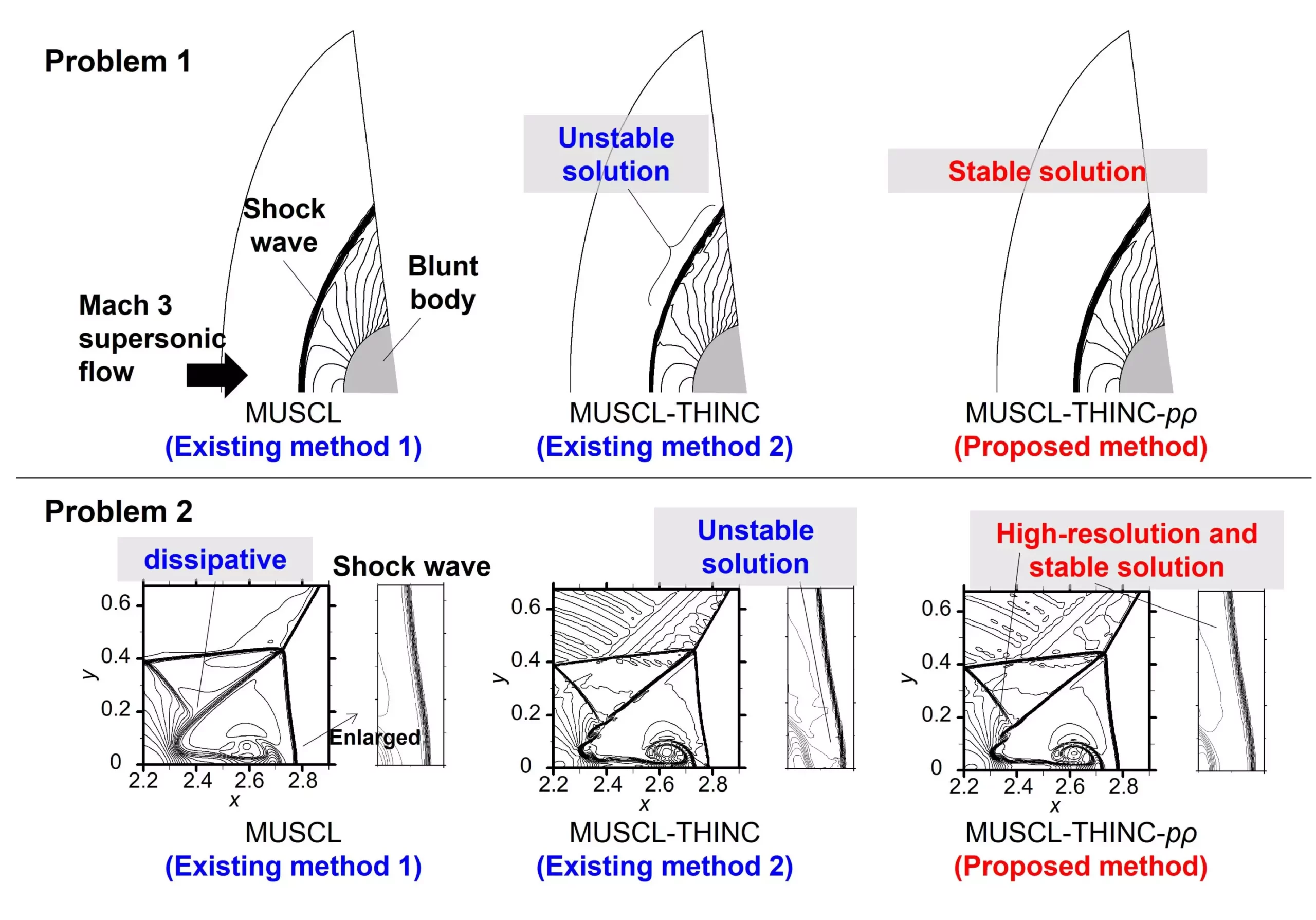In an era where computational fluid dynamics shapes the future of multiple industries, a team of innovative scientists has recently unveiled a groundbreaking hybrid scheme designed for simulating both steady and unsteady single-phase compressible flows. Published in the esteemed journal Physics of Fluids on April 10, 2024, this development marks a significant advancement in the field, positioning itself as a beacon of hope for researchers and engineers grappling with the complexities of fluid dynamics. Utilizing a combination of established techniques and novel enhancements, the researchers have crafted a method that promises not only higher precision but also practical usability.
Deciphering the Complex Dynamics of Compressible Flows
Compressible flow simulations are essential in scenarios where gases experience notable density variations. Applications range from aerospace engineering, where the behavior of high-velocity aircraft must be predicted, to mechanical engineering, where fluid behavior can dictate system efficiencies. However, simulating compressible flows has historically presented unique challenges. Traditional methods, including the widely accepted Monotonic Upstream-Centered Schemes for Conservation Laws (MUSCL), often lead to inaccuracies in flows featuring shock waves and discontinuities due to excessive numerical dissipation. The recent work by the team from Yokohama National University, led by Associate Professor Keiichi Kitamura, approaches these long-standing issues head-on.
A Novel Solution Through Hybridization
The team has proposed a cutting-edge hybrid methodology they refer to as T-MUSCL, which ingeniously combines the MUSCL method with the Tangential Hyperbolic Interface Capturing (THINC) approach. This union aims to overcome the limitations posed by conventional techniques while keeping the foundations straightforward enough for widespread adaptability. By striking an appropriate balance between nonlinearity and reconstruction processes, T-MUSCL ensures accurate representation of both weak and strong shock waves, a feat that has eluded many in the field.
Key to this scheme’s success are two pivotal parameters: the nonlinearity-weighted parameter and the slope-ratio-weighted parameter. These components allow the algorithm to flexibly adjust its response based on the nature of the flow, enhancing the fidelity of simulations dramatically. As a result, T-MUSCL provides an enhanced convergence behavior and improved stability, particularly in steady two-dimensional blunt body problems, a classic challenge in fluid dynamics.
Convergence and Accuracy: A Paradigm Shift
One of the most striking advantages of the T-MUSCL scheme is its enhanced accuracy when characterizing transient phenomena. Traditional MUSCL methods often face difficulties in capturing extremely weak moving and stationary shock waves. In contrast, T-MUSCL excels in these scenarios, providing computational results with significantly reduced errors. This level of accuracy is not merely an academic milestone; it carries practical implications that could transform industries reliant on precise fluid dynamics analyses.
The T-MUSCL scheme is constructed within the paradigm of spatially second-order schemes, which are popular among researchers due to their accessibility. Kitamura’s assertion that “we obtained high-resolution and robust results for complex compressible flows using simple expressions” encapsulates the ethos of this development. It opens doors for a broader pool of users, democratizing access to high-quality simulation tools.
Future Directions: Bridging Theory and Application
While this innovative method represents a significant leap forward, the researchers are keenly aware of its potential applications in real-world engineering problems. Their next objective is to test the T-MUSCL method against practical challenges faced in industrial settings. The outcomes of these applications will not only validate the utility of their method but also refine it further for broader implementation.
As fluid dynamics continues to evolve, the team’s ambitions extend beyond just enhancing simulation capabilities. They aim to deepen the understanding of compressible flow dynamics and shock waves, fostering advancements across various sectors, notably aerospace and mechanical engineering. Gaku Fukushima, a researcher from the Faculty of Engineering at Yokohama National University, emphasizes this vision, highlighting the potential for T-MUSCL to facilitate industry innovations.
The advent of T-MUSCL provides a robust platform for tackling some of fluid dynamics’ most pressing challenges. As industries increasingly depend on precise simulations to inform engineering decisions, the significance of adopting effective computational methods cannot be overstated. The work of this team is not just a noteworthy contribution to academic literature; it is a vital step toward enhancing technology and understanding in fluid dynamics. The ripple effects of their research could very well stimulate future innovations across a plethora of fields, amplifying the relevance and application of compressible flow simulations in real-world scenarios.


Leave a Reply